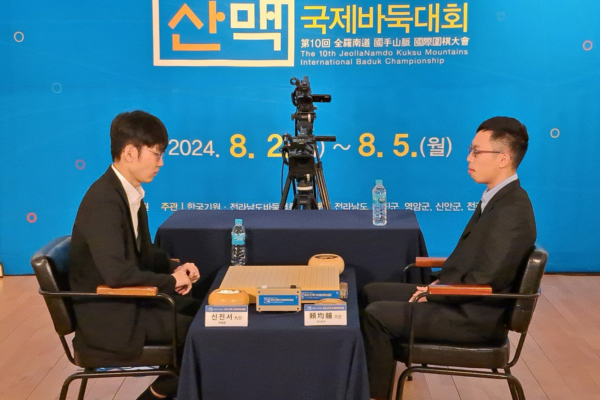On August 5th, the 10th “Jeollanam-do Geumosan Cup International Go Tournament” concluded at the Heo Jeong-ung Art Museum in Lingyan County, Jeollanam-do, South Korea. 22-year-old Taiwanese Go player Lai Jun-fu, a 9-dan professional, played black to the end and defeated South Korea’s top Go player, Shin Jin-seop, also a 9-dan professional, becoming the third Taiwanese player to be crowned world champion after LG Cup champion Zhou Junxun and Asian Games individual gold medalist Hsu Hao-hung.
In this tournament, the “dark horse” Lai Jun-fu successively defeated South Korea’s Park Min-kyu, China’s world champion Fan Tingyu, and South Korea’s world champion Byun Sang-il to reach the finals, where he faced South Korea’s top Go player Shin Jin-seop. Shin Jin-seop had made it to the finals for four consecutive times before, with one championship and two runner-up titles.
During the game, Lai Jun-fu took the black stones to start after winning the opening move lottery. In the early stage of the game, he showcased his strength by actively attacking the lower left corner and initiating a fierce confrontation.
White’s move 66 was a mistake, as Shin Jin-seop seemed to have miscalculated the potential threat of Lai Jun-fu’s move 83. Lai Jun-fu seized the opportunity to launch a strong attack on the lower left corner of white, but due to the improper sequence of moves, he only captured four white stones below without taking full advantage to secure territory. Shin Jin-seop stabilized his position, maintaining a slight lead.
In the middle game, Shin Jin-seop played solidly, guarding against his weaknesses and not allowing Lai Jun-fu to exert power, gradually establishing a lead with his strong positional control techniques. Meanwhile, Lai Jun-fu struggled under time pressure, closely monitoring the situation and hoping for his opponent to make a mistake.
With a sense of superiority, Shin Jin-seop maintained a calm attitude of “winning the game without making a fuss,” making concessions in endgame positioning and showing some lack of rigor in handling the details, which provided Lai Jun-fu with the opportunity to reverse the game.
Move 212 was a critical mistake for white, causing the opponent to fall into a trap. Due to the possible black move at B, white’s move at A was ineffective, resulting in a missed opportunity to save a stone. In retrospect, it was indicated that white’s move 212 should have been a single connection at 216, followed by pushing at A to prevent the cut.
Moves 230 and 232 were fatal mistakes in this game. The value of a single stone in the center “square” for white was greater than the single stone on the right side “triangle”, indicating that move 230 should have been played at 231 instead. Lai Jun-fu emphasized after the game that “capturing the white stone in the center was the key to turning the game around.”
If move 232 had instead been a placement at 234, white might have had a slight chance of winning by half a point, but in reality, with black’s move, the half-point advantage for black was firmly secured.
Lin Shixun, an 8-dan professional from the Haifeng Go Academy, provided insightful commentary on the key moments of the game for the avid Go fans.
In the later stages of the game, Lai Jun-fu almost made every move in the last second and relentlessly applied pressure, navigating through the game with precision under time constraints, ultimately achieving his first world championship victory in his professional career.
According to reports from the Haifeng Go Academy, Lai Jun-fu expressed in an interview after the game that many of the rounds were initially quite risky, and he felt very fortunate to have won after the dramatic reversal. When asked about his level of nervousness during the competition, Lai Jun-fu admitted to feeling a slight amount of it, but due to his experience in several previous world championships, he felt relatively calmer this time.
After enduring several intense battles, Lai Jun-fu mentioned that he would take a moment to relax a bit and give himself some time to rest. He thanked everyone for their support and emphasized his commitment to continue working hard to achieve better results.
The “Geumosan Cup” was sponsored jointly by Jeollanam-do, Lingyan County, Kangjin County, Sinan County, and the Jeollanam-do Education Office, with the tournament organized by the Korea Go Association. The tournament followed Korean Go rules, with black giving a 6.5-point komi, and each player having a basic time of 30 minutes, with three 40-second byo-yomi periods. The champion received a prize of 100 million Korean won (approximately $73,500 USD), while the runner-up received 40 million Korean won (approximately $29,400 USD).

